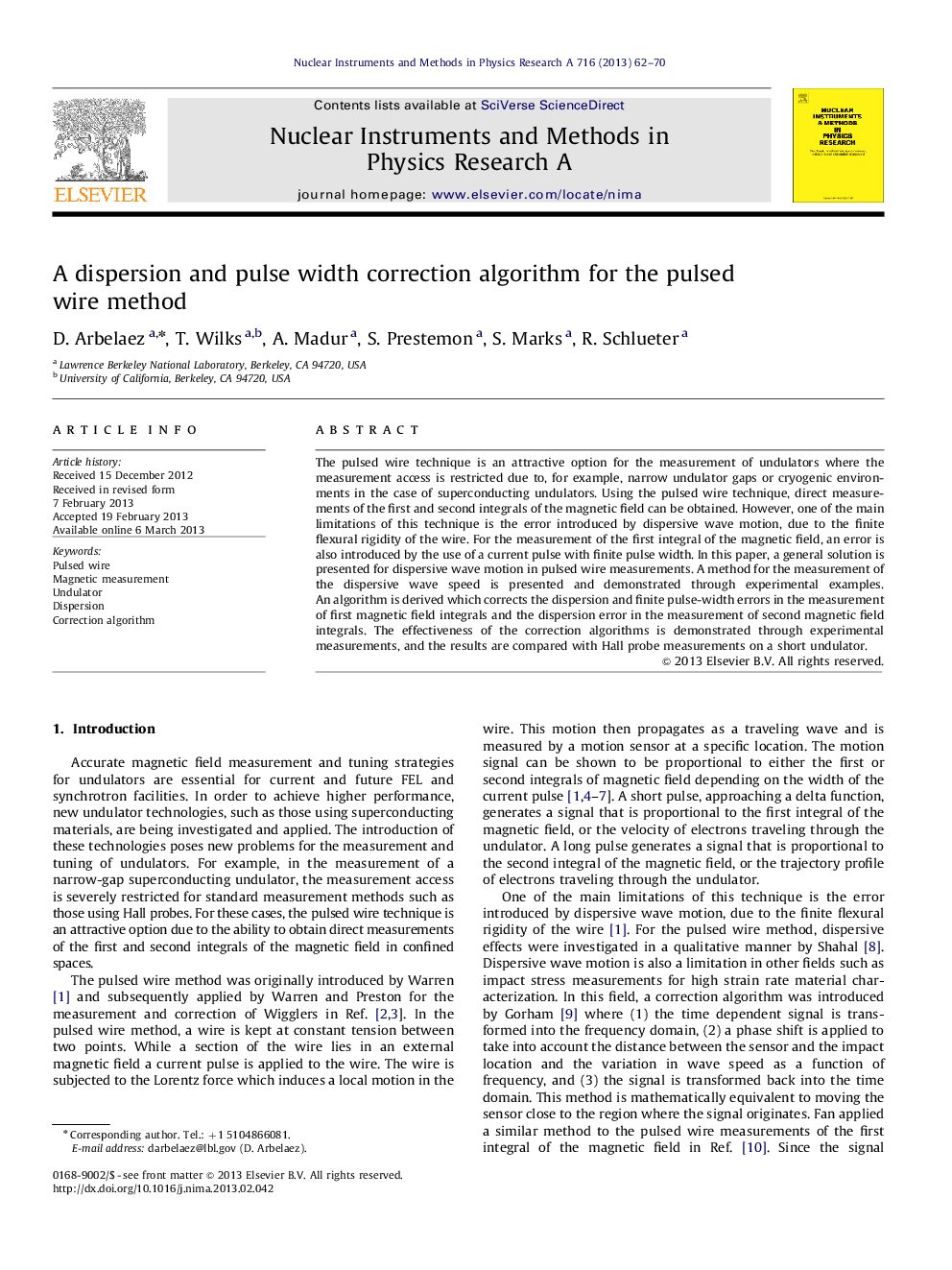| Article ID | Journal | Published Year | Pages | File Type |
|---|---|---|---|---|
| 1822986 | Nuclear Instruments and Methods in Physics Research Section A: Accelerators, Spectrometers, Detectors and Associated Equipment | 2013 | 9 Pages |
The pulsed wire technique is an attractive option for the measurement of undulators where the measurement access is restricted due to, for example, narrow undulator gaps or cryogenic environments in the case of superconducting undulators. Using the pulsed wire technique, direct measurements of the first and second integrals of the magnetic field can be obtained. However, one of the main limitations of this technique is the error introduced by dispersive wave motion, due to the finite flexural rigidity of the wire. For the measurement of the first integral of the magnetic field, an error is also introduced by the use of a current pulse with finite pulse width. In this paper, a general solution is presented for dispersive wave motion in pulsed wire measurements. A method for the measurement of the dispersive wave speed is presented and demonstrated through experimental examples. An algorithm is derived which corrects the dispersion and finite pulse-width errors in the measurement of first magnetic field integrals and the dispersion error in the measurement of second magnetic field integrals. The effectiveness of the correction algorithms is demonstrated through experimental measurements, and the results are compared with Hall probe measurements on a short undulator.
► We derive the equations that describe dispersive motion in a pulsed wire magnetic measurement. ► We develop algorithms that can be used to correct measurement errors that are due to dispersive and finite pulse width effects. ► Excellent agreement is found between the corrected pulsed wire results and Hall probe measurements on a short undulator.
